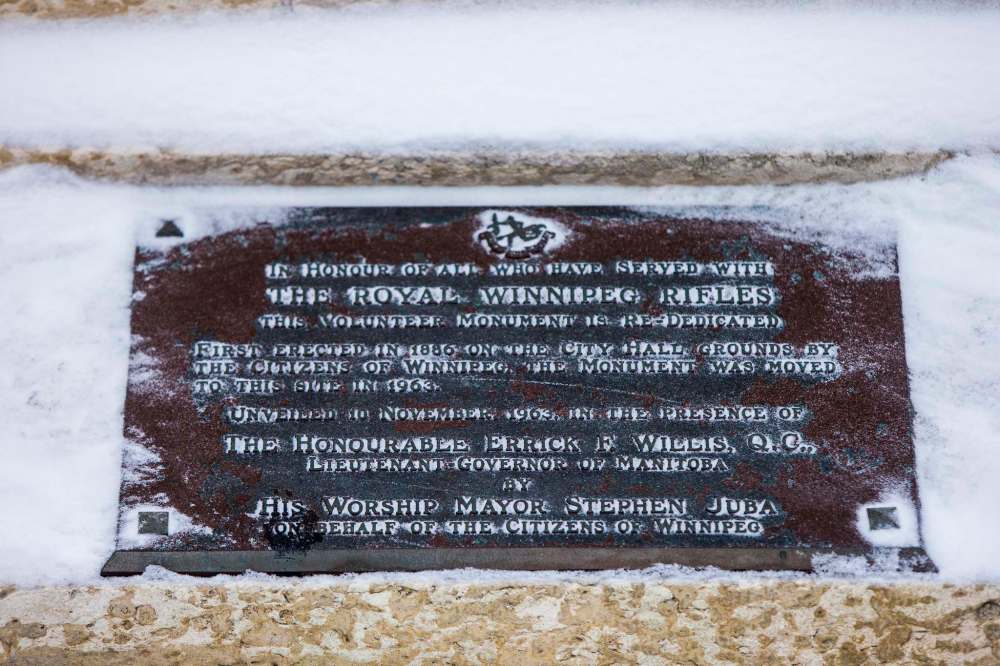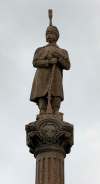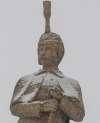Winnipeg monument re-evaluation plan nears final approval
Advertisement
Read this article for free:
or
Already have an account? Log in here »
To continue reading, please subscribe:
Monthly Digital Subscription
$0 for the first 4 weeks*
- Enjoy unlimited reading on winnipegfreepress.com
- Read the E-Edition, our digital replica newspaper
- Access News Break, our award-winning app
- Play interactive puzzles
*No charge for 4 weeks then price increases to the regular rate of $19.00 plus GST every four weeks. Offer available to new and qualified returning subscribers only. Cancel any time.
Monthly Digital Subscription
$4.75/week*
- Enjoy unlimited reading on winnipegfreepress.com
- Read the E-Edition, our digital replica newspaper
- Access News Break, our award-winning app
- Play interactive puzzles
*Billed as $19 plus GST every four weeks. Cancel any time.
To continue reading, please subscribe:
Add Free Press access to your Brandon Sun subscription for only an additional
$1 for the first 4 weeks*
*Your next subscription payment will increase by $1.00 and you will be charged $16.99 plus GST for four weeks. After four weeks, your payment will increase to $23.99 plus GST every four weeks.
Read unlimited articles for free today:
or
Already have an account? Log in here »
Hey there, time traveller!
This article was published 14/01/2020 (2155 days ago), so information in it may no longer be current.
A new policy that lays out the path for Winnipeggers to rename and re-contextualize local monuments to help commemorate Indigenous history is one step closer to completion.
Executive policy committee gave the green light to the “Welcoming Winnipeg: Reconciling Our History” initiative at city hall Tuesday morning, sending it to council for approval later this month.
The policy, drafted after extensive public consultations by the city’s Indigenous relations division, recommends installing a diverse committee to field applications from members of the public about monuments to be named, renamed or given added context.
Mayor Brian Bowman said he was surprised by the level of nuance with which residents responded to the idea, telling reporters Tuesday he had assumed — when the project launched last year — the majority would be in favour of removing controversial landmarks from the cityscape.
Similar discussions have panned out in other Canadian cities such as Victoria and Halifax over the past few years, where statues of Sir John A. Macdonald and Edward Cornwallis were taken down.
“I, for one, cringe when I hear people talking about rewriting history. (The city is) not going to rewrite history, but how do we acknowledge history in an accurate way that pays appropriate deference to historic reality?”
Bowman discussed how “Welcoming Winnipeg” stemmed from a conversation he had with Halifax Mayor Michael Savage about how to proactively address contentious monuments, rather than have city council react hurriedly to public pressure.
Bowman said he still expects to hear “divisive debates” about local landmarks, but would hope the new policy will help steer conversations toward truth and reconciliation.
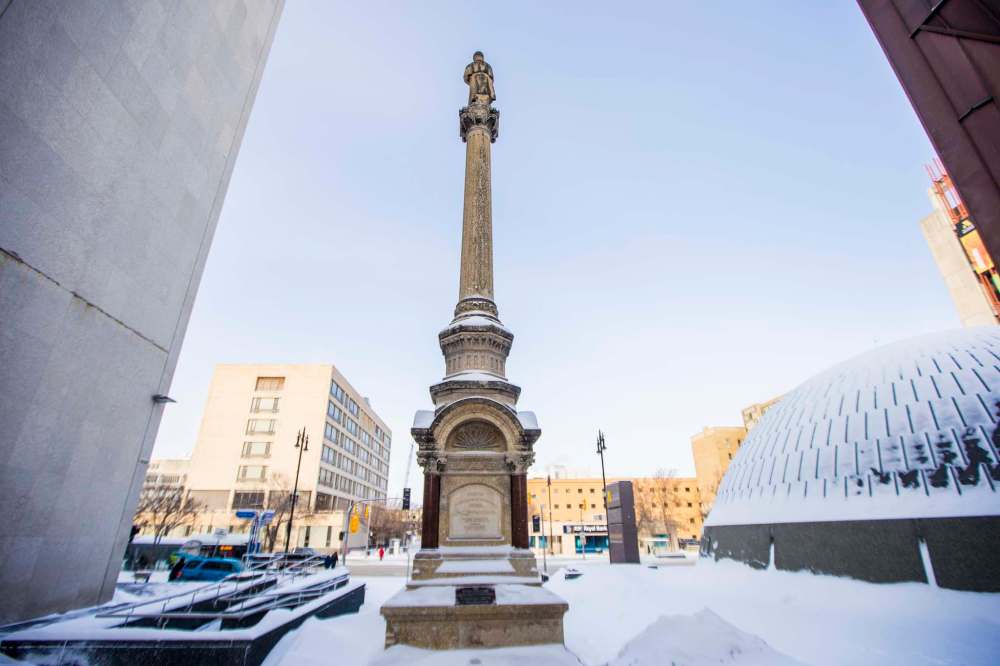
“You can’t have the reconciliation without people knowing the truth and the history of this community,” the mayor said.
“I, for one, cringe when I hear people talking about rewriting history. (The city is) not going to rewrite history, but how do we acknowledge history in an accurate way that pays appropriate deference to historic reality?”
For Bowman, there are “many” monuments that need to be addressed, including a statue standing almost directly across from city hall.
The Volunteer Monument was designed by architect Samuel Hooper and placed on the original City Hall grounds in 1886.
The tall pillar now stands between the Manitoba Museum and Centennial Concert Hall. It originally paid tribute to the battalion that fought the Louis Riel-led Métis forces at Fish Creek and Batoche, Sask., in 1885, and was later rededicated to the Royal Winnipeg Rifles.
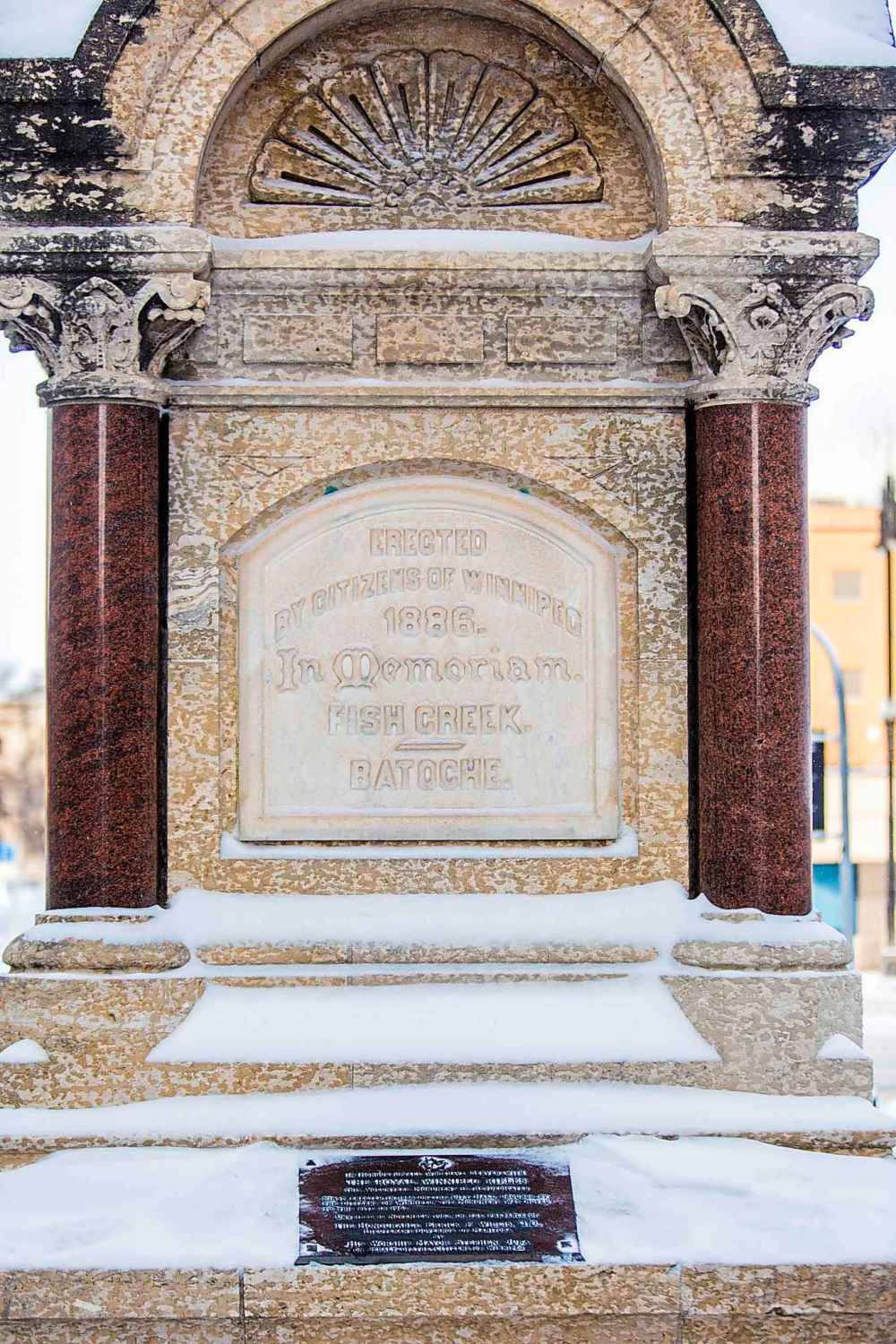
The monument commemorates some lives lost during the Battle of Batoche, but not those of the Métis, the mayor pointed out.
“I may have my personal views, but we may hear there are others that are of higher priority that may come forward and I’ll want to listen to the community in due course, rather than simply politically impose something that could really inflame the community on this,” he said.
jessica.botelho@freepress.mb.ca
Twitter: @_jessbu
Welcoming Winnipeg: What We Heard report
